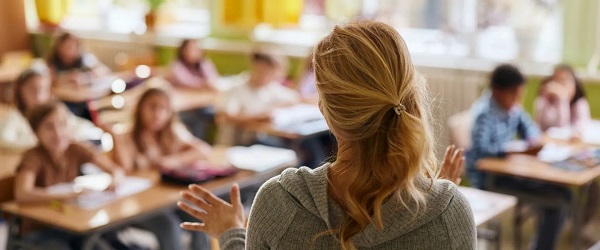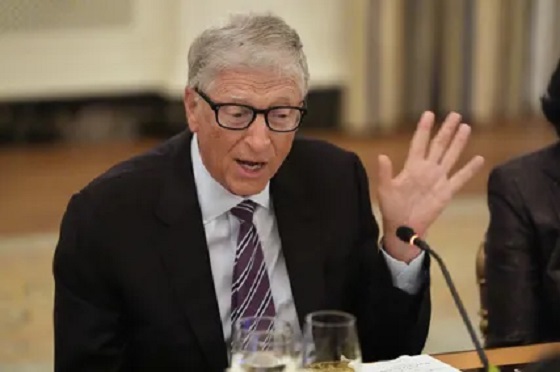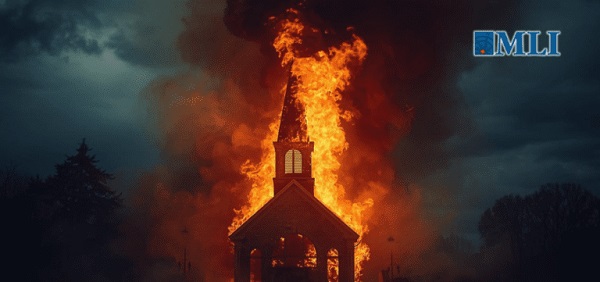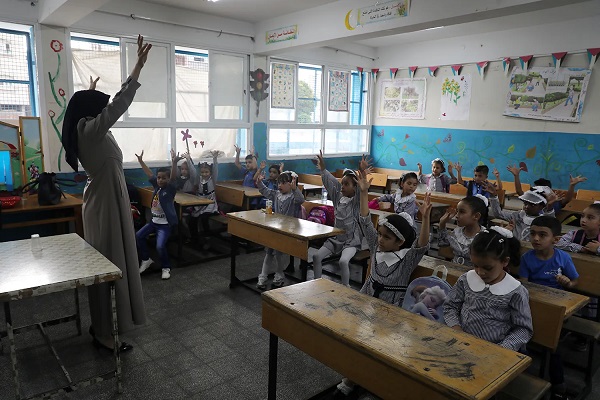Education
1-in-3 Canadian university students fear formal consequences for expressing honest viewpoints in class

From the Fraser Institute
By Matthew D. Mitchell and Michael Zwaagstra
As university students across Canada head back to campuses, a new Leger poll, commissioned for the Fraser Institute, shows 37 per cent of self-described right-leaning students and even 30 per cent of self-described left-leaning students fear formal consequences—including lower grades—if they express a viewpoint in class that conflicts with what is considered the “safe” stance on controversial topics.
“When students attend university, it is assumed that they will encounter a broad array of opinions, and that differing views will be discussed, contested and debated openly. But that’s not happening at campuses across Canada, according to the students themselves,” said Matthew D. Mitchell, senior fellow with the Fraser Institute and coauthor of Canadian Students Are Getting a One-Sided University Education.
The study, based on the new Leger poll commissioned by the Fraser Institute, finds:
– 58 per cent of right-leaning students and 51 per cent of left-leaning students believe that there is a “safe” political view on controversial topics discussed in university classes.
– 37 per cent of right-leaning students, 33 per cent of centre-leaning students and 30 per cent of left-leaning students fear experiencing formal consequences— including having their grades lowered—for expressing honest views during class discussions.
– 40 per cent of right-leaning students and 35 per cent of left-leaning students feel constrained in being able to ask questions, offer unconventional thoughts, or challenge current norms on controversial issues.
– 50 per cent of right-leaning students and 36 per cent of left-leaning students said they felt uncomfortable expressing their honest opinions based on the political views of their professor.
– And 85 per cent of right-leaning students and even 45 per cent of left-leaning students believe that their professors advocate a leftist viewpoint.
“Students should never be afraid to ask tough questions, express their honest opinions or challenge conventional views in class,” said study co-author Michael Zwaagstra. “These findings raise serious questions about the quality of university education Canadian students are receiving.”
The Leger poll surveyed 985 undergraduate students and 215 graduate students online from May 1 to May 22, 2025. The margin of error is +/-2.8%, 19 times out of 20.

Canadian Students Are Getting a One-Sided University Education
- A new survey finds that right-leaning university students feel considerably more restricted than left-leaning students in expressing their views during class discussions. They are fearful of consequences such as their formal grades being lowered for having the “wrong” opinion.
- Left-leaning political viewpoints are dominant on university campuses. Fifty-five percent of students describe their political views as left-leaning, while only 15% consider themselves right-leaning.
- A majority of students, both right-leaning and left-leaning, believe that there is a “safe” political view on controversial topics discussed in university classes.
- Forty-two percent of right-leaning students said that they experienced a classroom environment at university that limited discussion and questions on controversial topics to only one side of the argument. In contrast, only 29% of left-leaning students had this experience.
- Among students who say their professors advocate a view, eighty-three percent of right-leaning students feel their professors promoted a left viewpoint, while 45% of left-leaning students feel the same way. Few students, left, centre, or right, believe their professors promote a right viewpoint.
- Among right-leaning students who feared experiencing formal consequences for expressing the “wrong” viewpoint during class discussions, 74% feared that the professor might lower their grades.
Matthew D. Mitchell
Senior Fellow in the Centre for Human Freedom, Fraser Institute
Alberta
Schools should go back to basics to mitigate effects of AI

From the Fraser Institute
Odds are, you can’t tell whether this sentence was written by AI. Schools across Canada face the same problem. And happily, some are finding simple solutions.
Manitoba’s Division Scolaire Franco-Manitobaine recently issued new guidelines for teachers, to only assign optional homework and reading in grades Kindergarten to six, and limit homework in grades seven to 12. The reason? The proliferation of generative artificial intelligence (AI) chatbots such as ChatGPT make it very difficult for teachers, juggling a heavy workload, to discern genuine student work from AI-generated text. In fact, according to Division superintendent Alain Laberge, “Most of the [after-school assignment] submissions, we find, are coming from AI, to be quite honest.”
This problem isn’t limited to Manitoba, of course.
Two provincial doors down, in Alberta, new data analysis revealed that high school report card grades are rising while scores on provincewide assessments are not—particularly since 2022, the year ChatGPT was released. Report cards account for take-home work, while standardized tests are written in person, in the presence of teaching staff.
Specifically, from 2016 to 2019, the average standardized test score in Alberta across a range of subjects was 64 while the report card grade was 73.3—or 9.3 percentage points higher). From 2022 and 2024, the gap increased to 12.5 percentage points. (Data for 2020 and 2021 are unavailable due to COVID school closures.)
In lieu of take-home work, the Division Scolaire Franco-Manitobaine recommends nightly reading for students, which is a great idea. Having students read nightly doesn’t cost schools a dime but it’s strongly associated with improving academic outcomes.
According to a Programme for International Student Assessment (PISA) analysis of 174,000 student scores across 32 countries, the connection between daily reading and literacy was “moderately strong and meaningful,” and reading engagement affects reading achievement more than the socioeconomic status, gender or family structure of students.
All of this points to an undeniable shift in education—that is, teachers are losing a once-valuable tool (homework) and shifting more work back into the classroom. And while new technologies will continue to change the education landscape in heretofore unknown ways, one time-tested winning strategy is to go back to basics.
And some of “the basics” have slipped rapidly away. Some college students in elite universities arrive on campus never having read an entire book. Many university professors bemoan the newfound inability of students to write essays or deconstruct basic story components. Canada’s average PISA scores—a test of 15-year-olds in math, reading and science—have plummeted. In math, student test scores have dropped 35 points—the PISA equivalent of nearly two years of lost learning—in the last two decades. In reading, students have fallen about one year behind while science scores dropped moderately.
The decline in Canadian student achievement predates the widespread access of generative AI, but AI complicates the problem. Again, the solution needn’t be costly or complicated. There’s a reason why many tech CEOs famously send their children to screen-free schools. If technology is too tempting, in or outside of class, students should write with a pencil and paper. If ChatGPT is too hard to detect (and we know it is, because even AI often can’t accurately detect AI), in-class essays and assignments make sense.
And crucially, standardized tests provide the most reliable equitable measure of student progress, and if properly monitored, they’re AI-proof. Yet standardized testing is on the wane in Canada, thanks to long-standing attacks from teacher unions and other opponents, and despite broad support from parents. Now more than ever, parents and educators require reliable data to access the ability of students. Standardized testing varies widely among the provinces, but parents in every province should demand a strong standardized testing regime.
AI may be here to stay and it may play a large role in the future of education. But if schools deprive students of the ability to read books, structure clear sentences, correspond organically with other humans and complete their own work, they will do students no favours. The best way to ensure kids are “future ready”—to borrow a phrase oft-used to justify seesawing educational tech trends—is to school them in the basics.
Business
Why Does Canada “Lead” the World in Funding Racist Indoctrination?
-

 Alberta1 day ago
Alberta1 day agoAlberta’s huge oil sands reserves dwarf U.S. shale
-

 Alberta1 day ago
Alberta1 day agoCanada’s New Green Deal
-

 Energy22 hours ago
Energy22 hours agoCanada’s sudden rediscovery of energy ambition has been greeted with a familiar charge: hypocrisy
-

 Business1 day ago
Business1 day agoCOP30 finally admits what resource workers already knew: prosperity and lower emissions must go hand in hand
-

 armed forces1 day ago
armed forces1 day agoOttawa’s Newly Released Defence Plan Crosses a Dangerous Line
-

 Indigenous1 day ago
Indigenous1 day agoResidential school burials controversy continues to fuel wave of church arsons, new data suggests
-

 Business20 hours ago
Business20 hours agoOttawa Pretends To Pivot But Keeps Spending Like Trudeau
-

 Daily Caller21 hours ago
Daily Caller21 hours agoParis Climate Deal Now Decade-Old Disaster














